Do-It-Yourself Orthodontic Treatment (ONLY BLOG YOU’LL NEED)
Last Updated on August 29, 2021 by editor
Are do-it-yourself orthodontic treatments or direct-to-consumer clear aligners good? The field of orthodontics is full of new technology that makes it easier than ever to achieve a dazzling smile. While getting straight teeth used to involve years of wearing a mouth full of metal, you can now benefit from options such as aligner trays that are more comfortable. Alas, there are items that were never intended to be used as orthodontic appliances being used widely by unassuming people. Read on for the full low down on this worrisome trend.
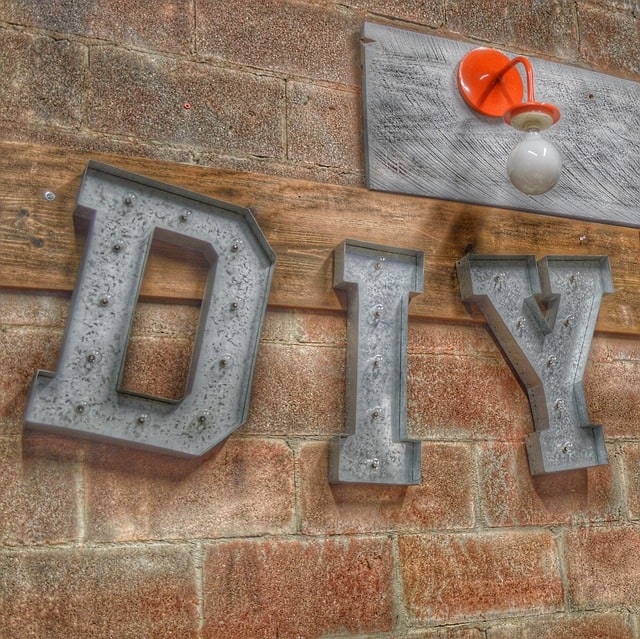
In recent months, there has been a growing trend of companies marketing braces that you can receive through the mail. While these companies do make it easy to get your orthodontic appliances, you do need to be aware that the convenience is often not worth the cost. Sadly, do-it-yourself orthodontic treatment or direct-to-consumer aligners rarely live up to the company’s claims, and you will find that they are more trouble than they are worth.
In some cases, the aligners can even cause more damage to your smile than you had before. While we do understand the appeal of being able to get straight teeth by just walking to your mailbox. We know that it is necessary to make sure that you understand exactly why these products are not as good as the company’s claim.
If you want to find out more about the bad idea of do-it-yourself orthodontic treatment and dental work visit these pages on Inside Edition, the Washington Post, or Today Online Health and Wellness.
People Also Ask
- How do I get braces for free?
- Can you straighten your teeth without braces?
- Is there a cheaper alternative to Invisalign?
- What are the best clear aligners?
- What is do-it-yourself orthodontic treatment?
The Mail Order / Do-it-Yourself Orthodontic Trend
-
What Are the Risks of Using Do-it-Yourself Orthodontic Aligners?
There are several different methods that direct-to-consumer aligner companies use to get the products in your hands. In most cases, you will need to use their special kit to make an impression of your mouth that is then used as a mold to make your aligner trays. Taking accurate impressions is a fine art that requires education and training. In fact, you may even see your orthodontist redo an impression if they feel that it is not properly done from the beginning. If the impression that you make is not correct, then you can expect that your direct mail aligners will not work properly.
There is also the risk of your orthodontic treatment not going as planned. While these companies claim that they will have orthodontists monitoring your progress, the truth is that you do not know who these people are. Instead, it is better to go to an expert orthodontist with a brick-and-mortar business. There you can see for yourself their skills and credentials.
-
Is There a Difference in Quality and Comfort?
Do you remember those impressions that we first talked about? When the impressions are off, you can also expect that the direct mail aligners will not be comfortable. You should also be aware that many direct mail companies use poor quality materials to make the aligners. With clear aligners from a real orthodontist, you can expect better quality and comfort. For instance, Invisalign trays have scalloped edges on top that fit your teeth better and are less likely to cause gum irritation.
-
How Are In-Person Orthodontic Appointments Different?
There is a world of difference in what happens when you go to an actual orthodontic office compared to direct mail methods. During your initial consultation, an expert orthodontist assesses your entire mouth. This is to determine which type of treatment best fits your needs. They not only check for crooked teeth, but they also look for more subtle abnormalities in your bite. This can also be corrected with a clear aligner.
An in-person visit also allows you to benefit from highly technical equipment. This gives a better view of what needs to be done to give you a more beautiful smile. For example, your in-person appointment for braces may involve the orthodontist using 3-D technology. This is to show you an example of how your smile is transformed throughout each phase of your treatment.
Your orthodontist also talks to you about all of your options. While a clear aligner is great for some people, this may not be your best choice. For instance, you may need a different type of braces to correct severe problems with your bite or tooth alignment. Alternatively, fixed braces may be better for you if you fear that you will not remember to wear the aligners.
Once you begin treatment, your orthodontist will have you come into the office periodically to check on your progress. These in-person visits are important because they allow the board-certified orthodontist to make adjustments to your treatment plan if they are needed. They may also notice things that you might not. Such as a crack in the aligner tray or change in your teeth that affects how well they work.
-
Do Aligners From In-Person Orthodontists Work Faster?
Orthodontists can also use special techniques that increase the effectiveness of braces when you come into their office. With Direct-to-Consumer braces, you get a standard type of treatment that is designed for a one-size-fits-all approach that doesn’t always work. When you come into the office, the orthodontist can place special attachments on teeth that need to be moved faster or in a certain way. Although it won’t be noticeable when you smile, these attachments can allow you to complete your treatment faster than you could with direct mail products.
-
What Happens During an Emergency?
Sure, plastic trays look like a simple thing to use. However, they can break or cause painful sores to develop in your mouth. You could also experience dental trauma such as a missing tooth that alters how your aligner trays work. By working with an in-person orthodontist, you can address emergencies quickly so that you rarely miss a minute of your treatment.
-
Are There Other Types of Braces That Work?
You wouldn’t try to prescribe yourself a medication to treat a health condition that you don’t know about. And your teeth should be treated the same. While you may want clear teeth aligner trays, they may not be your best or only option. For instance, you may need lingual braces that can go on the backs of your teeth for the same invisible look but a different amount of pressure.
-
Will My New Smile Stay the Same for Years?
You also need to prepare for taking care of your new dazzling smile. Direct mail braces always fail with this part of your treatment plan because the companies do not provide assistance with the retainment period. After using clear trays to straighten your teeth, you may need to continue wearing them for a period of time. You may also need a retainer to wear at night for months or years. An in-person orthodontist is always ready to make sure that your teeth stay perfectly aligned.
DIY Rubber Band Braces And Other Weirdness’s
The internet abounds with stories about people who try to make braces by using
- Rubber bands
Rubber bands can slip on the teeth or they can become lodged in the gums and require surgery to extract.
- Hair elastics
These squash teeth together while taking into consideration the surrounding teeth. This unorthodox method can damage the roots of your teeth and cause your teeth to fall out.
- Paper clips
Braces gently and slowly realign the teeth, which is essential for a permanent and safe solution. Paper clips do not make for safe movement.
These are all items that were never intended to be used as orthodontic appliances. Other outré items used for DIY braces include earring backs, dental floss, and Super Glue. All of these items can cause irreparable and permanent damage to your teeth and can be hazardous to your overall health as well. Super Glue was never marketed for internal use. Watch a scary video from YouTube about a disaster waiting to happen.
Do-it-Yourself Orthodontic Treatment – The AAO Position
For 18 months, the AAO has aggressively and proactively been warning consumers to be wary of various “do-it-yourself orthodontic” procedures when it comes to orthodontic care. These procedures have been popularized on social media, with many showing young adults attempting to move their teeth with rubber bands, paperclips, and inappropriate use of orthodontic appliances without the personal evaluation and care of an orthodontic specialist.
The AAO believes that orthodontic care should always be performed under the direct supervision of an orthodontist. Regular orthodontic check-ups throughout treatment best serve the patient and allow the treating orthodontist to monitor not only tooth movement, but also the patient’s overall oral health, including hygiene issues that may impact treatment decisions.
Dr. Panucci endorses the AAO’s position 100% and was part of the Public Service Announcement that AAO put together about the dangers of do-it-yourself orthodontics, see video above.

The Top 10 AAO Questions
The AAO advises that when researching orthodontic treatment. You should consider many key questions, some of which include:
- Are comprehensive diagnostic records like x-rays taken before your treatment, as part of your treatment?
- As part of your treatment fee, do you receive any in-person visits to a dentist’s or orthodontist’s office during your treatment?
- Is only one treatment type offered (such as invisible aligners or a certain appliance)?
- If a dentist or orthodontist is involved with your treatment, do you know the name of the dentist or orthodontist who will be specifically involved with your case (for example, is it available on the company’s website or elsewhere)?
- What are the possible risks (financial, health, etc.) associated with your orthodontic treatment?
- Who is responsible for detecting any issues that may occur during your orthodontic treatment? Is it you? If it is a doctor not associated with your treatment, who pays for those check-ups?
- If a doctor is involved with your orthodontic treatment, how can you contact him or her over the course of your treatment? How can you contact him or her if an emergency arises?
- If an emergency arises, does the company have a dentist or orthodontist in your area that you can see in-person? If not, who would cover the costs associated with seeing a dentist or orthodontist in your area?
- If you are injured or have another dispute involving your orthodontic treatment, how is it handled (litigation, arbitration, etc.) and what rights do you have?
- Does the treatment model comply with the dental laws in your state? To check your state’s dental laws, click https://www.aaoinfo.org/state-laws-and-regulations. Information for your state dental board can be found at https://www.aaoinfo.org/aao/state-dental-board-info.
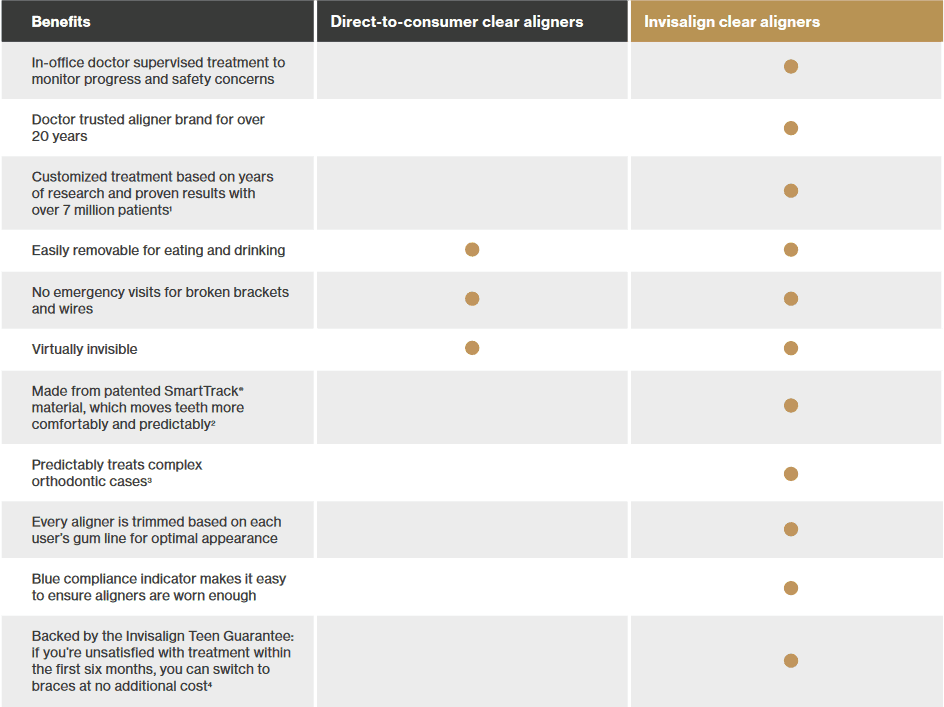
Re-treatment with Invisalign
It is now a time where expert orthodontists are so worried about the oral health of people that they have agreed to offer discounts on re-treatment to correct issues and malformation due to mail-order treatment. See this page for full details on how to correct issues at a discount rate.
A FREE Consultation Awaits
The next time that you see an ad claiming to help you get straight teeth with do-it-yourself orthodontic treatment, you can look at it with a critical eye. Always start any type of orthodontic treatment with an in-person consultation like Dr. Pannuci so that you can get a treatment plan that is tailored to fit all of your oral health needs.
Like what you read? Comment below or CLICK on an APP LOGO to follow us and share the conversation
220 N. Aviation Blvd. Suite A
Manhattan Beach, CA 90266
Phone: (310) 379-0006
Do-It-Yourself Orthodontic Treatment (ONLY BLOG YOU’LL NEED)

Dr Patti Panucci attended the University of Louisville School of Dentistry for four years, where she graduated with a DMD degree (May 2000) among the Top 10 in her class. Following that, she headed west to Los Angeles to complete her three-year residency at one of the top-ranked orthodontic programs in the country – the University of Southern California.
Along with her certificate in orthodontics, Dr. Panucci earned a master’s degree in craniofacial biology. During those three years, she fell in love with Southern California beach life and decided that this was where her future lay.







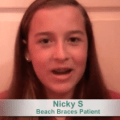

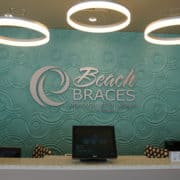
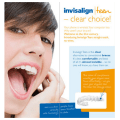


Leave a Reply
Want to join the discussion?Feel free to contribute!